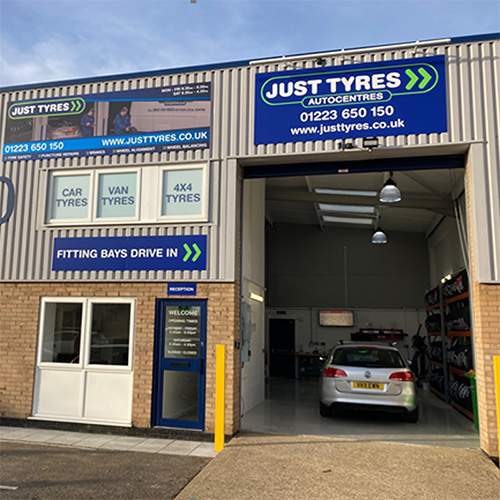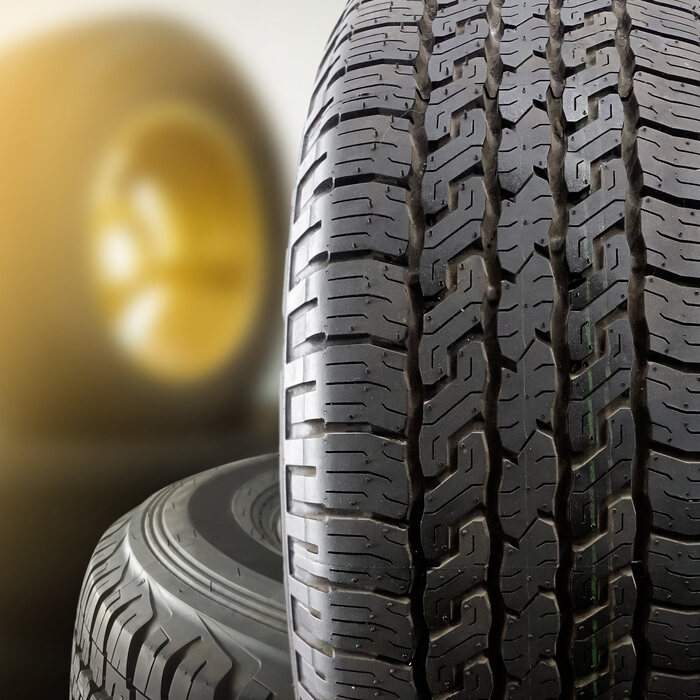TYRE SIDEWALL DAMAGE - WHY IT’S DANGEROUS AND HOW TO DEAL WITH IT
With only a small amount of your tyres’ surface touching the road - known as the contact patch - it’s naturally that part of the tyre which experiences the most wear. Because of this it’s also the area most likely to become damaged.
However, wear isn’t the only reason a tyre can become damaged and unsafe, and other parts of the tyre, such as the sidewall, can also experience damage and therefore lead to an MOT failure, fine, or blowout. So, along with checking the treads, it’s important to regularly check your sidewalls as well
Types of sidewall damage and how they occur
Damage to the sidewall of your tyres can come in many forms, and there are numerous reasons it may occur:
Cuts and tears
Cuts and tears can be caused by poor road conditions and other environmental factors such as stones, glass and other debris. They should be looked at immediately by a tyre professional, as they will get worse over time.
Scuffs and nicks
Scraping the kerb can do more than just damage to your wheels or hubcaps, they can also cause damage to the sidewall. A light scuff may not cause an issue, but a severe scrape could damage the structure of the tyre and should be looked at by a professional.
Bulges and bubbles
Overinflating your tyres can lead to bulges or bubbles in the sidewall, which in turn can lead to a blowout. Catching the kerb can also result in a bubble forming due to damage affecting the internal structure of the tyre. This is known as an impact break. Bulges and bubbles should be looked at immediately.
Other reasons your tyre sidewall may become damaged include:
- Tyre structural issues
- Exceeding the tyre load index
- Age and wear
- Underinflation
Any form of damage to the sidewall could lead to a larger issue, so it’s important they’re not ignored.
Is damage to the sidewall dangerous?
Yes, any damage to the sidewall is an indication that there may be severe damage to the internal structure of the tyre. If left unchecked, even for a short period, it could lead to a blowout, which in turn could lead to an accident. Even the best drivers will struggle to control a vehicle during a blowout at high speed.
Can you drive on a tyre with a damaged sidewall?
The short answer is no, you should not drive your vehicle if any of the tyre sidewalls are damaged, unless driving to have the problem fixed. Not only is it dangerous, but it will lead to an instant fail of your MOT as it’s considered illegal. Driving with a severely damaged sidewall can result in a fine of up to £2,500 per tyre, as well as penalty points on your license.
What to do when you discover damage to the sidewall
Any type of tyre sidewall damage should be inspected to ensure it hasn’t caused - or isn’t caused by - structural damage.
Drive slowly and safely to a specialist, such as your local Just Tyres, and an expert will be able to advise on the state and safety of your tyres.
If the damage to the sidewall is severe, you should consider changing to your spare tyre to remove any risk of a potential blowout.
Check out our guide on how to change a car tyre safely for more information
Can you repair a tyre sidewall?
Unfortunately, unlike punctures, damage to the sidewall cannot be repaired. Whereas a majority of punctures can be repaired, they don’t cause severe damage to the overall structure of the tyre. Once the structure of the tyre has been compromised, it’s not possible to fix it.
Are all types of tyres susceptible to sidewall damage?
Yes, all types of tyres are just as susceptible to damage along the sidewall. Of all the standard tyre types - such as summer tyres, winter tyres and all-season tyres - one isn’t likely to be damaged more than another.
That being said, using the wrong seasonal tyres can increase the risk of damage to the sidewall. For example, summer tyres used in the winter can seize up in the cold, which can lead to cracks in the sidewall. Using seasonal tyres during the correct conditions will prevent unnecessary damage.
Run-flat tyres
Run-flat tyres have a thicker sidewall than standard tyres, however, because they’re designed to support the weight of the car in the event of a puncture, damage to the sidewall can be severe. Run flat tyres with a damaged sidewall should urgently be replaced.
How to prevent sidewall damage
Sometimes, damage to the sidewall of your tyres is unavoidable, such as when caused by stones, glass, or other debris in the road. Other times, it can be avoided, and it’s up to you to make sure your tyres remain road legal:
- Make sure your tyres are inflated as per the information in your vehicle’s handbook
- Avoid making contact with the kerb
- Avoid potholes and don’t drive over speed bumps too fast
- Inspect your tyres every two weeks to check for new cracks or bumps
- Keep your tyres clean
- Avoid using the wrong seasonal tyres
Buy new tyres today
If you’ve discovered that you have tyre sidewall damage, you can buy your new tyres online today. Just enter your vehicle registration number in our quick and simple tool to find a range of tyre options that are suitable for your vehicle and your budge






 Same Day Fitting. Order By 10:30am
Same Day Fitting. Order By 10:30am
 39 Nationwide Fitting Centres
39 Nationwide Fitting Centres
 5 Year Warranty On All Tyres
5 Year Warranty On All Tyres
 Price Check Promise. Always Great Deals
Price Check Promise. Always Great Deals

 Find a Centre
Find a Centre


